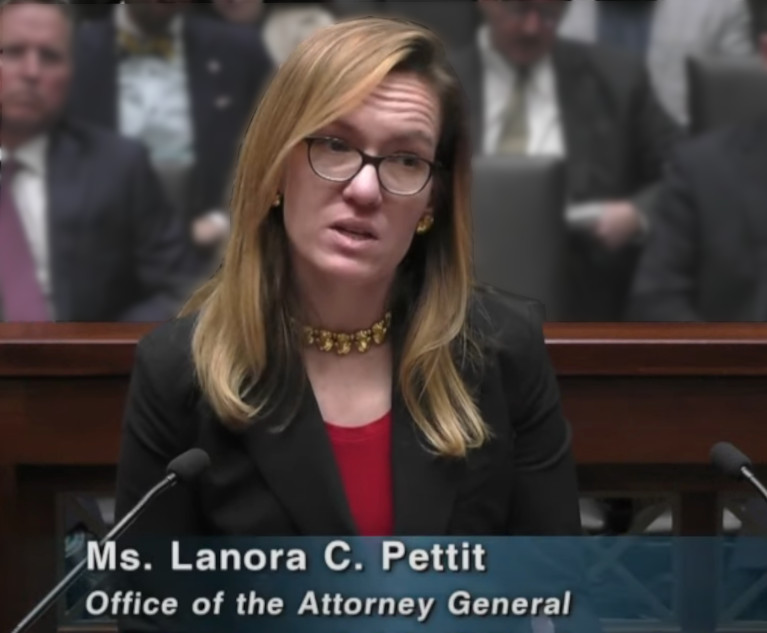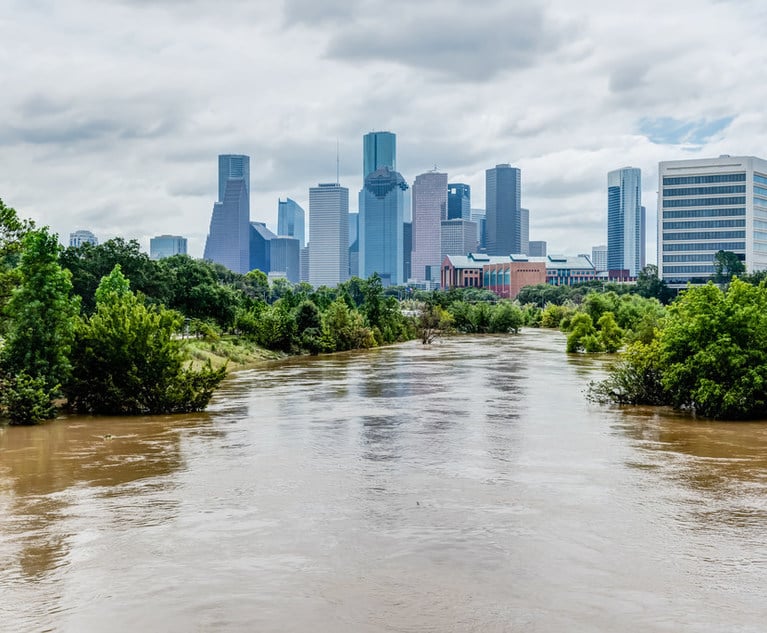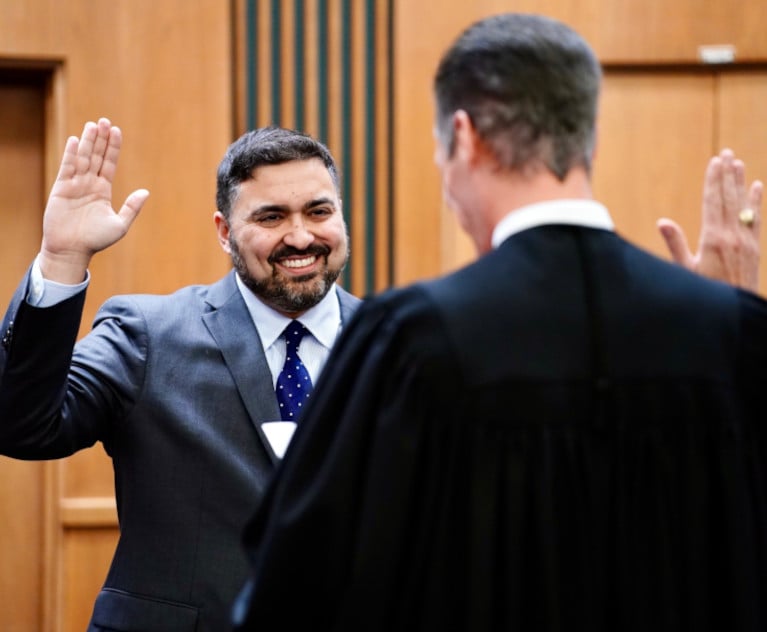Order in the Auditorium: Texas Courts Venture Into Unusual Spaces Amid Pandemic
This summer, judges have experimented with socially distanced jury trials by using high school auditoriums. With three trials so far, courts have already learned how to improve proceedings.
July 23, 2020 at 07:17 PM
7 minute read
 Modern theater in a high school. Photo: B Brown/Shutterstock.com
Modern theater in a high school. Photo: B Brown/Shutterstock.com
Bowie County Public Defender Sylvia Delgado was standing on the stage of her local high school's auditorium, the bright lights blinding her, unable to see the people in the more dimly lit auditorium.
Delgado was in the room for jury selection.
On the stage, she was watching as opposing counsel showed a presentation and questioned potential jurors for an aggravated-robbery case.
When it was her turn, she came down from the bright stage. But the 5-foot-1-inch Delgado still struggled to see faces.
She couldn't get a feel for the jurors.
"It was the most stressful trial I personally have been through," Delgado said, noting that, for the first time ever, she cried during her closing argument. "I was just drained, and exhausted."
Unfamiliar settings
Unlike pre-coronavirus times, when the auditorium might have held teens laughing and watching a performance, some courts in Texas have repurposed high school auditoriums for voir dire because they need a large venue to socially distance the jury panel.
Three judges in two rural counties have used auditoriums as part of jury trial experiments taking place this summer, as Texas searches for solutions to resume trials while ensuring participants' health and safety.
Like federal courts that have resumed jury trials since early June, these three district judges tested out in-person proceedings with plenty of precautions. So far, none of the experiments involved virtual jury trials.
The summer jury trial experiments are being coordinated through the Texas Office of Court Administration. Although 26 jury trials have been approved, only 17 are on track at this point for typical reasons: defendants decided to plead guilty, or litigants got continuances, said Administrative Director David Slayton. Other trials got delayed because of the state's recent coronavirus spike.
"We've gotten requests from both rural, urban and suburban jurisdictions," said Slayton. "They really are all over the state, and various sizes."
He said he has not heard about anyone contracting COVID-19 during the three trials so far.
Judge Bill Miller of the 5th District Court held the very first state court jury trial experiment in late June.
Settling on New Boston High School auditorium was only one of many details the judge worked out in preparation. Miller, who tried a criminal case involving an aggravated-robbery charge, collaborated with his regional presiding judge, county health authority, county judge, sheriff's office and clerk's office to iron out the plan, taking into account social distancing, extra cleaning, security and more.
Lessons From Trial Experiments
 David Slayton
David SlaytonDavid Slayton, administrative director of the Texas Office of Court Administration, said the state's three jury trial experiments so far have provided lessons.
- Along with a jury summons, judges should write a letter explaining all of the precautions they are planning. People then know it's safe to appear. A COVID-19 questionnaire should go with the summons.
- Jurors have removed their face masks during trial. Slayton said clear plastic face shields would keep them more comfortable while still protecting them.
- Judges will need to collaborate to schedule trials, since it takes two courtrooms at least—one for the trial itself and another as the jury room.
- Jurors, seated in the galleries, do not like for lawyers and litigants to turn their backs toward the judge, evidence or witnesses. Courts should rearrange the courtroom so the jury can see everyone all the time.
"There's all kinds of logistical issues that we had to arrange," Miller said. "In my opinion, it's going to take a lot for everyone to think through their details."
Miller qualified the jury and lawyers conducted voir dire in the high school auditorium.
After picking the jury, they returned to the courthouse for the trial. The commissioners' courtroom served as the jury room, and Miller's courtroom was rearranged with jurors in the gallery and furniture turned around so the lawyers and defendant faced them.
'Most stressful trial'
Delgado, who represented the defendant, said there were some things about the proceeding aside from the hard-to-see voir dire that she would change next time.
Back in Miller's courtroom for the trial, Delgado said she had to turn her back on the jurors, who were seated in the gallery, when she spoke to the judge on the bench or the witnesses in the witness stand. Jurors said after the trial that they wanted to see the defendant's face to see how he reacted to evidence or witnesses.
Jurors couldn't hear very well, she added. Delgado, who had an injury that introduced a gravelly texture to her voice, said she talked louder to compensate.
"When I get loud, it sounds like I'm yelling," she said, wondering if it made her seem more hostile than she is.
Exceeded expectations
Delgado noted that she wouldn't want to participate in another trial in a high school auditorium.
But the auditorium setting worked better than expected for Judge John Tidwell of the 202nd District Court in Bowie County, who also tested a jury trial. When asked if there was anything he would improve on for next time, Tidwell said he couldn't think of a negative.
"It worked so well. It really exceeded my expectations," he said.
The biggest difference with Miller's trial is that rather than reporting to the courthouse, the jury came back to the high school auditorium for Tidwell's whole trial.
Tidwell explained that more people than normal wanted to observe the trial. Broadcasting the proceeding didn't seem right because of the sensitive topic: it involved charges of aggravated sexual assault of a child. To allow the public to watch safely, Tidwell needed the spacious auditorium.
"I made it a requirement that every one, no matter whether they were members of the same household, I wanted every one socially distanced," he said.
The jury sat in chairs right in front of a stage in the auditorium. Tidwell, the attorneys and defendant, and the witnesses were spread out on the stage. Because of the way the podium and witness stand were oriented, the lawyers could still see the jurors during testimony.
Both Miller and Tidwell said they believe their jury trial experiments could be replicated and work across Texas.
"I keep hearing in various conversations with other judges that they are looking at different convention centers or larger areas similar to this," Tidwell said. "There's a lot of logistics that need to be worked out."
Related stories:
TAKE NOTE: Texas No Longer Needs Your Consent for an Experimental Jury Trial, Thanks to Emergency Order
Texas Jury Trials to Resume This Summer Under Experimental Program
This content has been archived. It is available through our partners, LexisNexis® and Bloomberg Law.
To view this content, please continue to their sites.
Not a Lexis Subscriber?
Subscribe Now
Not a Bloomberg Law Subscriber?
Subscribe Now
NOT FOR REPRINT
© 2025 ALM Global, LLC, All Rights Reserved. Request academic re-use from www.copyright.com. All other uses, submit a request to [email protected]. For more information visit Asset & Logo Licensing.
You Might Like
View All


Trending Stories
- 1Leaning Into ‘Core’ Strengths, Jenner’s Revenue Climbs 17%, Profits Soar 23%
- 2Frito Lays Could Face Liability for Customer's Grocery Store Fall Over Pallet Guard, Judge Rules
- 3Holland & Knight Expands Corporate Practice in Texas With Former Greenberg Traurig Partner
- 4Heir Cut: Florida Appellate Court Backs Garth Reeves' Will
- 5Class Action Allowed to Move Forward Against Philadelphia's 'Courtesy Towing' Program, Judge Rules
Who Got The Work
J. Brugh Lower of Gibbons has entered an appearance for industrial equipment supplier Devco Corporation in a pending trademark infringement lawsuit. The suit, accusing the defendant of selling knock-off Graco products, was filed Dec. 18 in New Jersey District Court by Rivkin Radler on behalf of Graco Inc. and Graco Minnesota. The case, assigned to U.S. District Judge Zahid N. Quraishi, is 3:24-cv-11294, Graco Inc. et al v. Devco Corporation.
Who Got The Work
Rebecca Maller-Stein and Kent A. Yalowitz of Arnold & Porter Kaye Scholer have entered their appearances for Hanaco Venture Capital and its executives, Lior Prosor and David Frankel, in a pending securities lawsuit. The action, filed on Dec. 24 in New York Southern District Court by Zell, Aron & Co. on behalf of Goldeneye Advisors, accuses the defendants of negligently and fraudulently managing the plaintiff's $1 million investment. The case, assigned to U.S. District Judge Vernon S. Broderick, is 1:24-cv-09918, Goldeneye Advisors, LLC v. Hanaco Venture Capital, Ltd. et al.
Who Got The Work
Attorneys from A&O Shearman has stepped in as defense counsel for Toronto-Dominion Bank and other defendants in a pending securities class action. The suit, filed Dec. 11 in New York Southern District Court by Bleichmar Fonti & Auld, accuses the defendants of concealing the bank's 'pervasive' deficiencies in regards to its compliance with the Bank Secrecy Act and the quality of its anti-money laundering controls. The case, assigned to U.S. District Judge Arun Subramanian, is 1:24-cv-09445, Gonzalez v. The Toronto-Dominion Bank et al.
Who Got The Work
Crown Castle International, a Pennsylvania company providing shared communications infrastructure, has turned to Luke D. Wolf of Gordon Rees Scully Mansukhani to fend off a pending breach-of-contract lawsuit. The court action, filed Nov. 25 in Michigan Eastern District Court by Hooper Hathaway PC on behalf of The Town Residences LLC, accuses Crown Castle of failing to transfer approximately $30,000 in utility payments from T-Mobile in breach of a roof-top lease and assignment agreement. The case, assigned to U.S. District Judge Susan K. Declercq, is 2:24-cv-13131, The Town Residences LLC v. T-Mobile US, Inc. et al.
Who Got The Work
Wilfred P. Coronato and Daniel M. Schwartz of McCarter & English have stepped in as defense counsel to Electrolux Home Products Inc. in a pending product liability lawsuit. The court action, filed Nov. 26 in New York Eastern District Court by Poulos Lopiccolo PC and Nagel Rice LLP on behalf of David Stern, alleges that the defendant's refrigerators’ drawers and shelving repeatedly break and fall apart within months after purchase. The case, assigned to U.S. District Judge Joan M. Azrack, is 2:24-cv-08204, Stern v. Electrolux Home Products, Inc.
Featured Firms
Law Offices of Gary Martin Hays & Associates, P.C.
(470) 294-1674
Law Offices of Mark E. Salomone
(857) 444-6468
Smith & Hassler
(713) 739-1250







